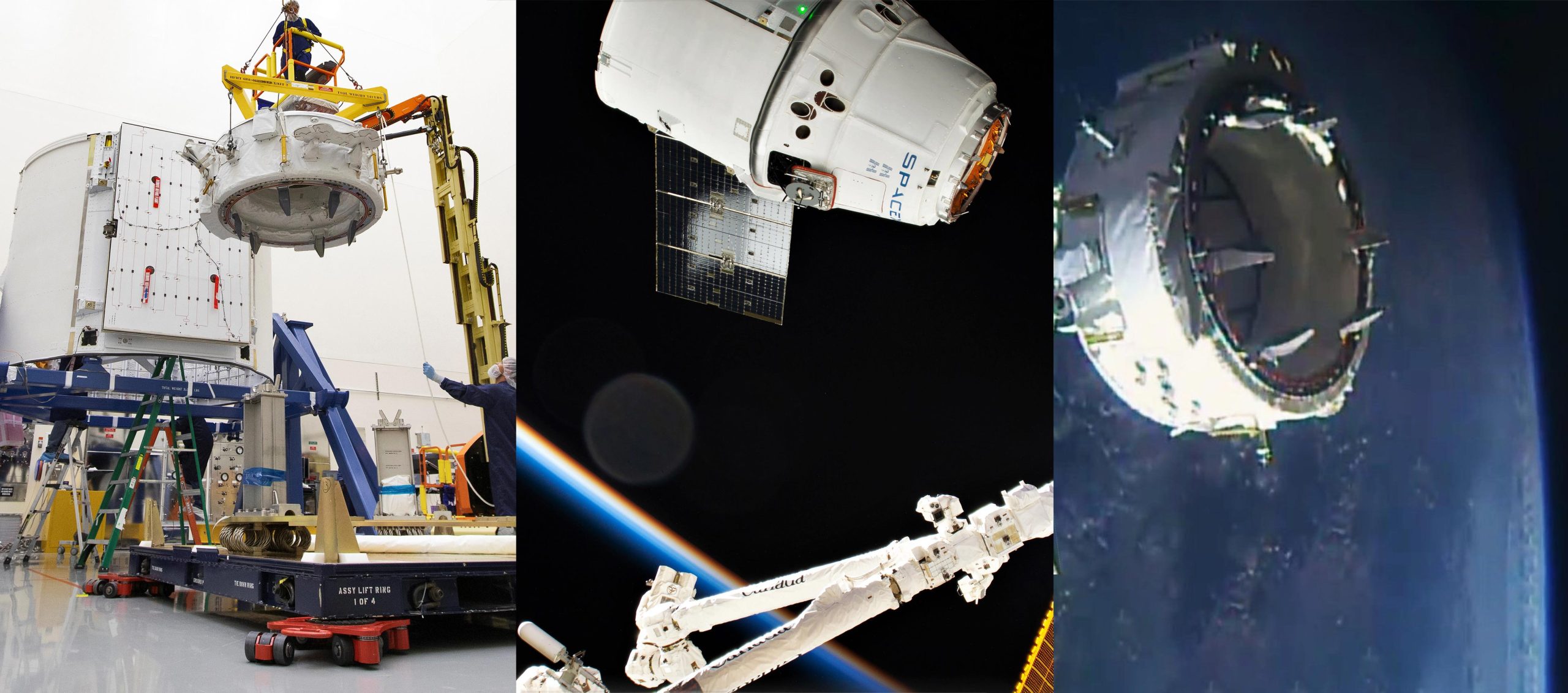
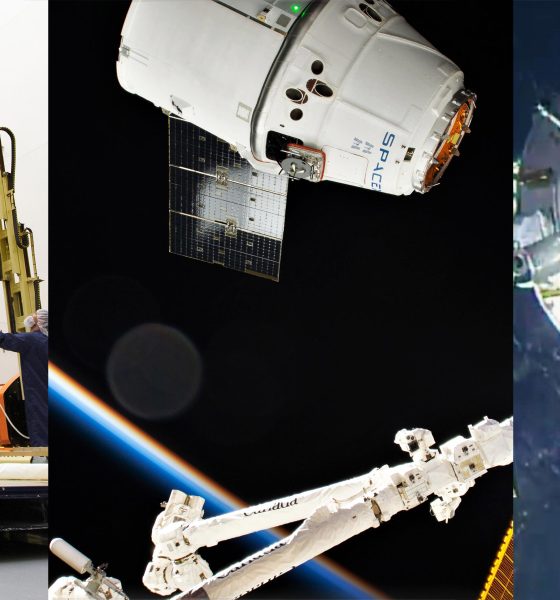
News
NASA installs SpaceX-delivered docking adapter for Crew Dragon, Boeing Starliner missions
Launched on July 25th, SpaceX’s CRS-18 Cargo Dragon successfully docked with the International Space Station (ISS) a few days later, delivering a major piece of space station hardware in its unpressurized trunk.
Known as International Docking Adapter 3 (IDA-3), the docking port will quite literally open the door for future commercial missions to the space station. Some 25 days after arriving at the ISS, NASA astronauts Nick Hague and Andrew Morgan performed a six-hour spacewalk (also known as an extra-vehicular activity or EVA) on August 21st, over the course of which they successfully installed IDA-3 on the outside of the space station.
On Monday, August 19th, IDA-3 was extracted from Cargo Dragon’s expendable trunk using Canadarm-2 and stored a few feet away from the Pressurized Mating Adapter 3 (PMA-3) on the station’s Harmony module. The PMA-3 is a leftover from the days of Space Shuttle and has thus been unused since 2011 – IDA-3’s installation means that the old hardware will be able to finally return to operational use.
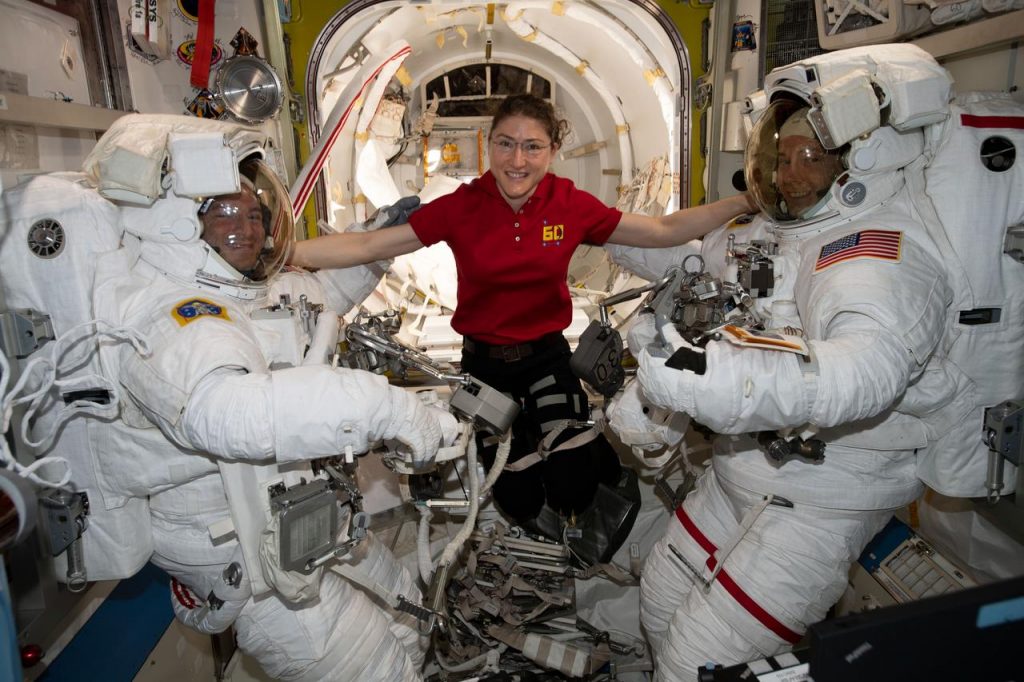
The successful spacewalk was the fifth of this year and 218th overall. Astronauts Nick Hague and Andrew Morgan worked outside of the ISS to complete the tethering process and install power and data connectors, spending much of the 6.5 hours simply attaching and routing new cabling, extremely difficult to do in NASA’s semi-rigid EVA spacesuits. Astronaut Christina Koch assisted the duo from inside the station.
IDA-2, IDA-3’s predecessor, was successfully installed way back in August 2016, while the docking port was used for the first time ever just six months ago, when SpaceX’s Crew Dragon spacecraft – as part of its inaugural orbital launch – autonomously docked at IDA-2 on March 3rd, 2019. IDA-1 was sadly destroyed after a Falcon 9 upper stage failed catastrophically in June 2015, resulting in the total loss of Cargo Dragon CRS-7 and its array of ISS-bound cargo. Although far from the first, IDA-3 is still an extremely important addition to the ISS, particularly with respect to assuring redundancy and future accessibility for numerous spacecraft.
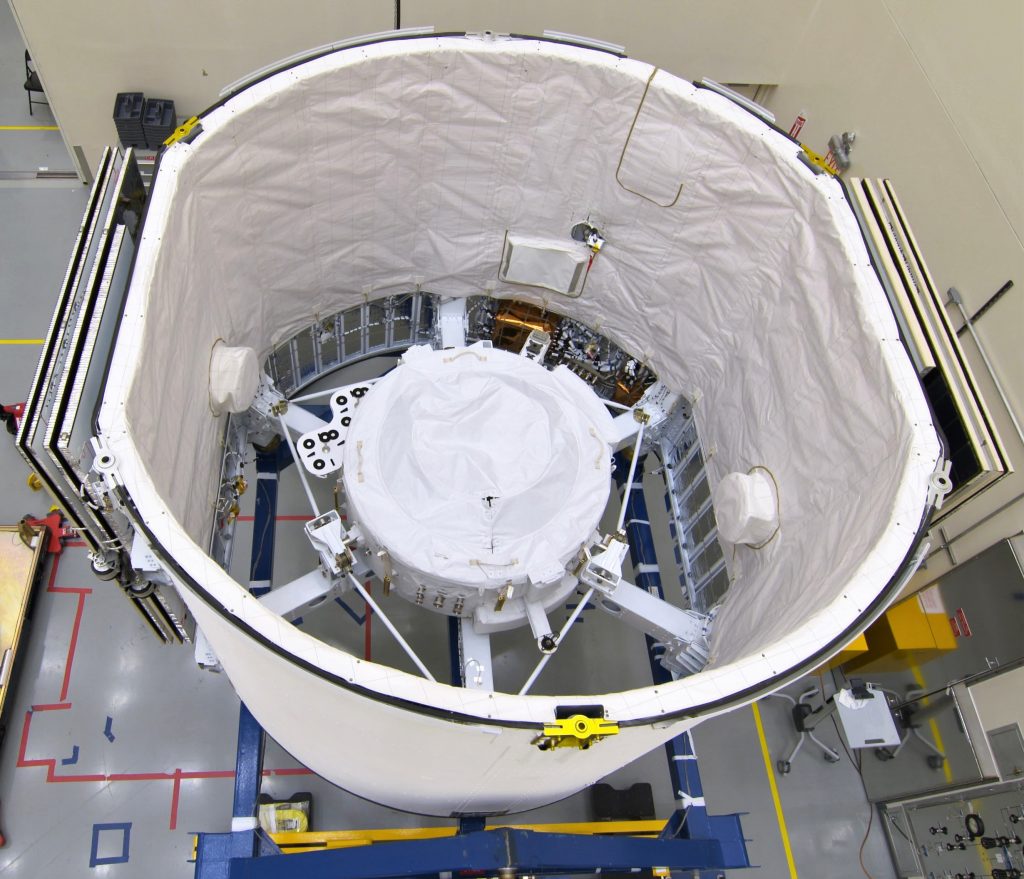
IDA’s are meant to serve as truly international ports, built by Boeing from a partially open-source design with parts from companies located in 25 different states and primary structures produced by Russian company RSC-Energia.
Both adapters feature a standard design, uniform docking requirements, and fittings for power and data transfer, all of which which are readily available to spacecraft designers to help streamline and simplify docking procedures. The IDA (technically, IDSS) standard has been adopted by both SpaceX’s Crew Dragon and Boeing’s CST-100 Starliner, while Russia may also adopt the standard on its next-generation Federation spacecraft, meant to replace Soyuz sometime in the 2020s.
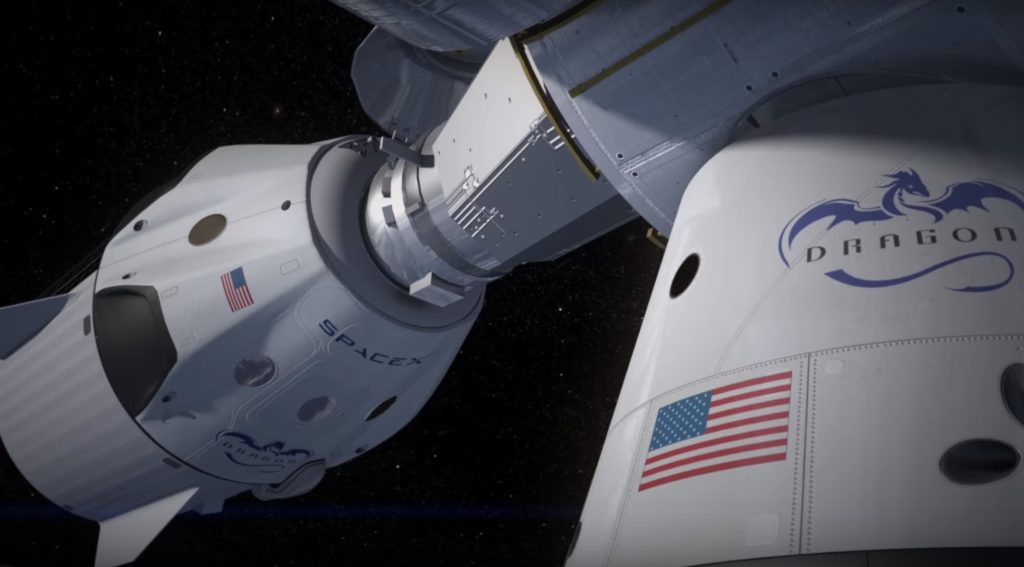
Both US capsules – currently in various stages of production and flight preparations – will be able to autonomously dock with either IDA-2 or -3, as will SpaceX’s Crew Dragon-derived Dragon 2, to be used for SpaceX’s Commercial Resupply Services 2 (CRS2) contract. With two IDA adapters, a SpaceX and Boeing crew capsule or two SpaceX Dragon 2s could simultaneously dock with the ISS.
Unlike the berthing process used by Cargo Dragon, Cygnus, and (prospectively) Dream Chaser, the docking adapters allow for spacecraft to perform autonomous docking maneuvers. Berthing instead involves the spacecraft in question station-keeping just a few meters away from the ISS while astronaut operators manually ‘grab’ the spacecraft with a giant, robotic arm known as Canadarm2.
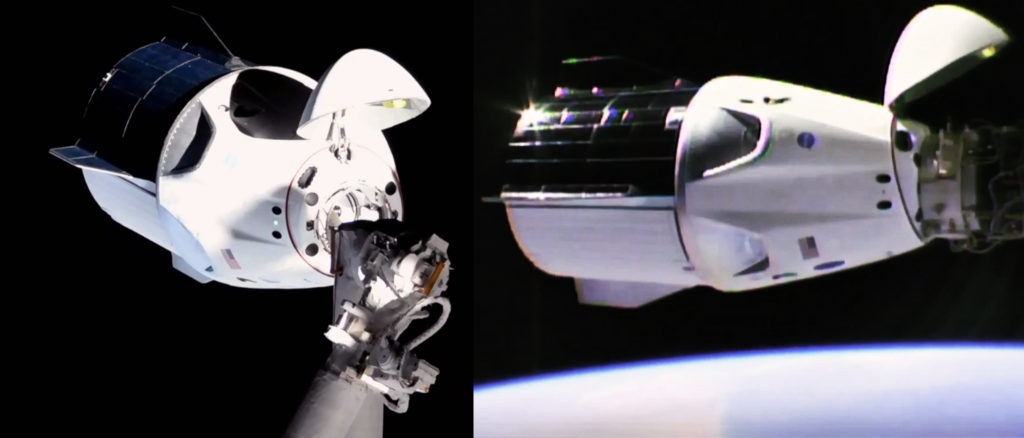
While the installation of a second adapter is certainly a step in the right direction to support a larger commercial customer base, there are many more steps to get through before the ISS can begin to support regular visits from Crew Dragon and Starliner. Both SpaceX and Boeing are hopeful that their capsules will be ready for their crewed launch debuts (Demo-2 and OFT, respectively) before 2019 is out, although delays into 2020 are extremely likely for both NASA Commercial Crew providers.
Check out Teslarati’s newsletters for prompt updates, on-the-ground perspectives, and unique glimpses of SpaceX’s rocket launch and recovery processes.

News
Tesla FSD fleet is nearing 7 billion total miles, including 2.5 billion city miles
As can be seen on Tesla’s official FSD webpage, vehicles equipped with the system have now navigated over 6.99 billion miles.

Tesla’s Full Self-Driving (Supervised) fleet is closing in on almost 7 billion total miles driven, as per data posted by the company on its official FSD webpage.
These figures hint at the massive scale of data fueling Tesla’s rapid FSD improvements, which have been quite notable as of late.
FSD mileage milestones
As can be seen on Tesla’s official FSD webpage, vehicles equipped with the system have now navigated over 6.99 billion miles. Tesla owner and avid FSD tester Whole Mars Catalog also shared a screenshot indicating that from the nearly 7 billion miles traveled by the FSD fleet, more than 2.5 billion miles were driven inside cities.
City miles are particularly valuable for complex urban scenarios like unprotected turns, pedestrian interactions, and traffic lights. This is also the difference-maker for FSD, as only complex solutions, such as Waymo’s self-driving taxis, operate similarly on inner-city streets. And even then, incidents such as the San Francisco blackouts have proven challenging for sensor-rich vehicles like Waymos.
Tesla’s data edge
Tesla has a number of advantages in the autonomous vehicle sector, one of which is the size of its fleet and the number of vehicles training FSD on real-world roads. Tesla’s nearly 7 billion FSD miles then allow the company to roll out updates that make its vehicles behave like they are being driven by experienced drivers, even if they are operating on their own.
So notable are Tesla’s improvements to FSD that NVIDIA Director of Robotics Jim Fan, after experiencing FSD v14, noted that the system is the first AI that passes what he described as a “Physical Turing Test.”
“Despite knowing exactly how robot learning works, I still find it magical watching the steering wheel turn by itself. First it feels surreal, next it becomes routine. Then, like the smartphone, taking it away actively hurts. This is how humanity gets rewired and glued to god-like technologies,” Fan wrote in a post on X.
News
Tesla starts showing how FSD will change lives in Europe
Local officials tested the system on narrow country roads and were impressed by FSD’s smooth, human-like driving, with some calling the service a game-changer for everyday life in areas that are far from urban centers.

Tesla has launched Europe’s first public shuttle service using Full Self-Driving (Supervised) in the rural Eifelkreis Bitburg-Prüm region of Germany, demonstrating how the technology can restore independence and mobility for people who struggle with limited transport options.
Local officials tested the system on narrow country roads and were impressed by FSD’s smooth, human-like driving, with some calling the service a game-changer for everyday life in areas that are far from urban centers.
Officials see real impact on rural residents
Arzfeld Mayor Johannes Kuhl and District Administrator Andreas Kruppert personally tested the Tesla shuttle service. This allowed them to see just how well FSD navigated winding lanes and rural roads confidently. Kruppert said, “Autonomous driving sounds like science fiction to many, but we simply see here that it works totally well in rural regions too.” Kuhl, for his part, also noted that FSD “feels like a very experienced driver.”
The pilot complements the area’s “Citizen Bus” program, which provides on-demand rides for elderly residents who can no longer drive themselves. Tesla Europe shared a video of a demonstration of the service, highlighting how FSD gives people their freedom back, even in places where public transport is not as prevalent.
What the Ministry for Economic Affairs and Transport says
Rhineland-Palatinate’s Minister Daniela Schmitt supported the project, praising the collaboration that made this “first of its kind in Europe” possible. As per the ministry, the rural rollout for the service shows FSD’s potential beyond major cities, and it delivers tangible benefits like grocery runs, doctor visits, and social connections for isolated residents.
“Reliable and flexible mobility is especially vital in rural areas. With the launch of a shuttle service using self-driving vehicles (FSD supervised) by Tesla in the Eifelkreis Bitburg-Prüm, an innovative pilot project is now getting underway that complements local community bus services. It is the first project of its kind in Europe.
“The result is a real gain for rural mobility: greater accessibility, more flexibility and tangible benefits for everyday life. A strong signal for innovation, cooperation and future-oriented mobility beyond urban centers,” the ministry wrote in a LinkedIn post.
News
Tesla China quietly posts Robotaxi-related job listing
Tesla China is currently seeking a Low Voltage Electrical Engineer to work on circuit board design for the company’s autonomous vehicles.

Tesla has posted a new job listing in Shanghai explicitly tied to its Robotaxi program, fueling speculation that the company is preparing to launch its dedicated autonomous ride-hailing service in China.
As noted in the listing, Tesla China is currently seeking a Low Voltage Electrical Engineer to work on circuit board design for the company’s autonomous vehicles.
Robotaxi-specific role
The listing, which was shared on social media platform X by industry watcher @tslaming, suggested that Tesla China is looking to fill the role urgently. The job listing itself specifically mentions that the person hired for the role will be working on the Low Voltage Hardware team, which would design the circuit boards that would serve as the nervous system of the Robotaxi.
Key tasks for the role, as indicated in the job listing, include collaboration with PCB layout, firmware, mechanical, program management, and validation teams, among other responsibilities. The role is based in Shanghai.
China Robotaxi launch
China represents a massive potential market for robotaxis, with its dense urban centers and supportive policies in select cities. Tesla has limited permission to roll out FSD in the country, though despite this, its vehicles have been hailed as among the best in the market when it comes to autonomous features. So far, at least, it appears that China supports Tesla’s FSD and Robotaxi rollout.
This was hinted at in November, when Tesla brought the Cybercab to the 8th China International Import Expo (CIIE) in Shanghai, marking the first time that the autonomous two-seater was brought to the Asia-Pacific region. The vehicle, despite not having a release date in China, received a significant amount of interest among the event’s attendees.








